Video Games
Putting the Assassin’s Creed Franchise Under the Knife – Part 1
Table of Contents
. . . or is it the Hidden Blade?
As with others out there, I’ve taken issue with Assassin’s Creed 3. But if you read my review you’ll notice that despite my many, many, problems with the game, I don’t hate it. It’s an experience that offers genuinely fun moments and neat ideas amidst all the frustration. On the whole it’s left me as conflicted as a Ridley Scott’s Prometheus; apparently when you dance with the ideas of Precursor races that spawned humanity, narrative coherence and emotional closure are the first casualties.
If I’m being honest though, I’m more in love with the potential of the series than the end results.
Hell, I still remember what I was thinking when I saw the original trailer that set my gamer’s heart all atwitter back in 2006.
You could say it was love at first stab.
It wasn’t just the stabbing. No, that’s in plenty of games. It was all the other stuff.
When Assassin’s Creed debuted, no other game was toying with the idea of “social stealth”, of using crowds and people to pull a Marcus Brody – to “Blend in, disappear.” Few games have done it since. Likewise, few (if any) games outside of Mirror’s Edge presented a character with such mastery over environmental traversal without giving them super powers or overalls, and none are the climbers the Assassins are.
But more importantly, Assassin’s Creed was ahead of the curve on a trend that’s taken over stealth games in recent years, the idea of becoming a predator. Along with Sam Fisher in Ubisoft’s other hit franchise, Altair used stealth not only as a defense, but as his best offense. To strike at opponents from nowhere before fleeing in the resulting chaos – this was a stealth game not only with a new twist on the genre, but also gave it a new purpose.
I was thrilled at the prospect of all these ideas, and as the build up to release gave me more tidbits of information confirming the player could do nearly everything in that initial trailer (the crossbow was cut, later appearing in Brotherhood), I walked into that game with massive expectations.
As with Altair, I was ready to take a leap of faith.
But in the interceding six years and five installments to Assassin’s Creed, I’ve walked away from each feeling greater and greater disappointment (well, not Revelations, I passed that one up in favor of Skyrim destroying my time). It isn’t that I’ve hated them. Far from it. It’s simply that the reality of each game never matched the expectations that initial trailer left me with.
Like my exes keep telling me, it isn’t enough to just have a potential for greatness, you also have to deliver it. Or as seminal expectation-versus-reality policy makers TLC put forward in their landmark No Scrubs ruling, if you can’t deliver you aren’t going to “get no love from me.”
Partially, my disappointment boils down to a core philosophical difference between my tastes and Ubisoft’s regarding difficulty. I’m a gamer raised on the NES library of “screw off and die” games, and a proponent of Yahtzee’s “Three Legged Milking Stool” design philosophy – a game has to have equal measures of Gratification, Context, and Challenge if it’s to be fully successful. Ubisoft’s non Splinter Cell games over the last decade don’t seem to give a fig about the challenge factor (and after Conviction I’m not sure even that caveat applies anymore).
They’re great on the “gratification” aspect though. The ability to pet animals in AC3 is so disarmingly charming and satisfying it almost seemed the point of the game.
As this awesome art by the phenomenal doubleleaf (found here) shows.
I harp on this not because I’m just a bitter old guy gamer who wants everything to resemble my youth (well, I’m not just that), but for a far more important reason. Lacking difficulty diminishes the core theme of the game – that of being an Assassin.
This is the real problem.
In the trailer I linked to above, Altair kills exactly three people – his target, and two guards protecting him, mostly before they can react. Then he runs away. Without the element of surprise on his side, Altair knows he’s screwed when reinforcements come and escape is his only option.
It’s a key point of difference between the game’s trailer and the actual game. When playing the original AC, once you got the counter-kill timing down, you could let city guards attack you for an hour and generate a higher death toll than Stalin. It’s antithetical to the whole point.
This achievement? Not so tough to get.
Now, the developers have tried to address this. In AC2 guards had variations and more armor, and in Brotherhood they were more aggressive. But these improvements were rendered moot by other techniques or weapons that nullified them. AC1 had the aforementioned counter-kill, AC2 had invincible swimming (especially broken in Venice, the Capital of Canals), Brotherhood had the “Epic Crossbow of Silent Sniping at 60 Meters”.
The obvious solution – adding difficulty selections – was ignored in favor of optional “full synchronization” objectives, a half-baked compromise as it doesn’t change the difficulty parameters overall, only affecting the core story missions that make up half of the actual games.
Of course this is why I enjoy the multiplayer aspect, where the players are very deadly but only if they get the drop on opponents resulting in the game of cat and mouse that seemed the intent from the start (which I lauded plenty in my Brotherhood review). But having the best representation of the core concept of your game only show up in the Multiplayer off-shoot is kind of screwy, to say the least. Especially since this really is a single-player focused experience.
Want to experience the best, most focused version of Assassin’s Creed? Send in the Clowns.
The word “Assassin” in the title is increasingly becoming the biggest lie in the series, and unless Ubisoft’s going to change the name to “Overpowered Swashbuckler’s Guidelines”, they need to take a long hard look at how the franchise has evolved further and further away from the original focus.
I maintain that making the games more difficult would renew much of the focus of the series. If you couldn’t destroy enemies so easily in massive melees and it was tougher to reduce notoriety it would go a long way to incentivizing the player to plan their strikes, to attempt more stealth, to you know, act like an assassin. But merely stating that the game needs more challenge isn’t enough; even if Ubisoft added a hardcore mode, chances are it would just be the standard “Less Health for the Player, More Health for enemies” quick fix that only addresses one aspect of the game – combat. Even though this is the core gameplay mechanic of the game, such a narrow focus would leave the rest of the game wanting, a state that I’ve mentioned before as being quite dissatisfying in its own right.
So, as I obviously have little else to do with my free time, and as I want Ubisoft to succeed in this endeavor (because I’d really love to not be disappointed with the next AC I buy), I’m going go through the major problems that have plagued the series and offer up some more nuanced solutions for each, game by game, and starting with the most recent – Assassin’s Creed 3.
Assassin’s Creed 3: Gratuitous Superfluousness & Economies of Fail
A little less than half of AC3 is composed of what are essentially very well integrated tutorials. Seriously, it takes til chapter six out of the twelve total before you’re in control of Connor and you have access to all the major features. But why are there so many tutorials you might ask?
Because there are about forty thousand different things they had to train you on, duh! Using hidden blades, swords, guns, horses, commands for allies, bows, bait, snares, the trading system, the boat, eagle vision . . . I could go on. Ubisoft teaches the player more stuff than a public school education, and seemingly in the same amount of time.
It’s perhaps fitting then, that about half the things you learn to do are useless.
OK, not exactly useless, but often totally unnecessary. The perfect example of what I’m talking about is how when Connor runs toward waist high fences you can hold different buttons to jump over them in different ways. None of the different jumps cause you to gain or lose speed versus just running toward it normally, so there’s no real reason to press this “parkour button”. It’s just pointless.
But that’s not a critical element so much as a bit of fluff. Especially compared to the other best example: the rope dart.
It’s a sharpened dart on the end of a rope. What were you expecting?
The rope dart is a ranged weapon – Connor hurls it at guys and yanks them into the dirt – temporarily stunning them and setting them up for follow up kills on the ground. If you’re on a tree branch (or similar overhanging post) you can yank a snagged foe into the air, using them as as a counterweight to create an express elevator to the ground without taking damage. In theory, the weapon is a versatile tool with multiple functions.
Except that both of these functions are negated by the overlapping functions of other weapons!
In ranged combat, both the bow and pistol do more damage, with pistols killing most foes outright. At first this isn’t such a big deal, as both these weapons consume ammunition and the pistols have a long reload, whereas the rope dart can be repeatedly used and without delay. However that advantage is nullified for two other reasons: ammunition is easily replenished by looting bodies, and in battles the enemies rush in close making melee attacks more effective than using ranged weapons at all.
The rope dart simple doesn’t do enough damage to justify its use when stabbing a guy in the face is just as good. In fact, the only useful ranged weapon in a fight are pistols since they basically give you a free kill or two to cut the crowd down to size (especially once you get dual holstered two-shot pistols). And as for the branch hang? That’s even more pointless – a double air assassination will do the same thing but nab two kills for the price of one, and doesn’t have the drawback of expending a rope dart (you can still shoot ’em from the trees too)!
There is literally nothing you can do with the weapon that can’t be done in another way, but better. Thus it becomes a redundant inclusion without any purpose, except for a change of pace. Or I suppose, for style.
In the Murderlympics Presentation category, the rope dart hang scores 9s all around! Well, except from the Bulgarian judge who gives it a grudging 6.
Bulgaria’s always tough to please.
To use really nerdy database terminology, the rope dart fails the Principle of Orthogonal Design. The concept actually has lots of purposes applied to gaming, but the basic idea is that player actions shouldn’t overlap each other too much; that every action the player has available should have a purpose distinct from all the others.
This lack of orthogonality crops up all over AC3‘s melee weapon design too. Aside from a rising damage curve, of the five weapon types available, only the weakest, Unarmed (which lets you steal weapons), and the strongest, Clubs/Axes (which can instant kill foes at the cost of disarming yourself), have different functions. The three middle types – The Hidden Blades, Daggers/Tomahawks, and Swords – have negligible differences in utility and function in open combat and for most assassinations.
When most of the weapons blend together like this it promotes sticking to whatever the player knows works rather than mixing it up and discovering new techniques. In essence, it promotes rote, boring play. This is exacerbated by obviously dominant weapons – the pistol for ranged attacks and whatever the highest damage melee weapon available currently is – which make everything else feel either superfluous, or so overspecialized that they rarely merit use (especially as switching between weapons and items is fairly cumbersome).
The Gun is Good! Too good. You’d almost think ZARDOZ made this game. Actually, that might explain some of precursor god stuff come to think of it.
Increasing the orthogonality of weapon functionality could eliminate or reduce much of the superfluousness. For example, if the rope dart fulfilled other roles – say Connor swung it around him in a circle, dealing a little damage to multiple foes and knocking them back a bit making it more defensive, and as a tool you could create temporary zip lines between buildings or trees – then it would have true utility. With the melee weapons, further limitations would work wonders – limiting the double counter to the the dagger/tomahawk or the defense break to the sword – to promote switching weapons to deal with specific situations, as would adding a stronger Rock/Paper/Scissors element – swords can counter daggers, block swords, can’t block axes while daggers can counter axes, block daggers, can’t block swords and so on.
But you get the idea, more orthogonal functionality gives more purpose to the equipment available.
While the current system isn’t terrible, it’s certainly suboptimal and indicative of a much larger issue: feature creep. In the first Assassin’s Creed, Altair didn’t have Connor’s 14 different weapons and items at his disposal, he had five, each doing something none of the others could. But as Ezio’s trilogy of games came out, each added an ever increasing set of fruitless features to the package diluting everything, and not just in the weapons and combat department.
The ultimate example of the profuse superficiality that the creeping feature set brought during the Renaissance Era entries is the economic meta-game which shows up again in AC3. Starting in AC2, the Assassin’s have had to earn cash to fund their murderous endeavors, which on it’s face is fine. However, each game has gone well beyond giving the player cash as a reward for completing missions and into the strange realm of business investment, where you can purchase multiple establishments (like blacksmiths and tailors) that generate even more cash as you progress.
Granted, the more obvious problem with this system is that it’s terribly balanced and circular. There are few costs or penalties, so it’s all too easy to earn gobs and gobs of money which you can only truly invest back into the businesses, thus earning you ever more money until currency quickly becomes worthless. While the balance was better in AC3 thanks to a more involved crafting process and expensive boat upgrades to drain funds, it was still a problem, even breaking a key dramatic plot point. One of the reason’s Connor fights is to protect his people’s land from the encroaching colonials, but by the end of the game I had so much cash laying around I should’ve been able to buy it myself.
But even if Ubisoft finally balances the system perfectly, the larger question remains: what does running a trading empire and raking in wealth have to do with assassinating Templar conspirators?
Who is this business magnate by day/murderer by night simulation even for?
Aside from Patrick Bateman I mean. But even he had more pointless stuff to buy than the assassins. Phil Collins albums, for example.
A player character’s abilities and activities inform their role. If wiping out cadres of enemies carrying a veritable armory like Doomguy is a valid option, the focus moves away from assassination to annihilation. When you spend half your time in menu screens balancing a ledger, you’re not an assassin, you’re an accountant.
Or to borrow from Ian Malcom’s playbook, it feels like Ubisoft seemed more preoccupied to see whether or not they could put more stuff in Assassin’s Creed, that they never stopped to think if they should.
While there’s a valid argument for having many different mechanics in a game to create a sense of verisimilitude, I’m in agreement with this guy – it shouldn’t come at the cost of losing your original purpose. There may have been some justification for all this stuff when Ezio was the protagonist (he was a Renaissance Man after all), but there’s very little for Connor, or the series as a whole.
If there’s something I hope Ubisoft learns from AC3, it’s that they need to get out of the trap of feature creep, re-balance their weapons with orthogonality in mind, and cut, Cut, CUT, all the fat out. I’ve been to the trade shows and seen the cosplay – no one wants to see an obese assassin.
And when Connor spends his time balancing a budget and playing board games rather than running around killing folks, that’s exactly what happens.
Besides, if they spent less time implementing the forty thousand different gameplay features and concentrated on the core experience, there might have been fewer bugs in the game. Ubisoft’s already on Patch #2, and there are still issues to be resolved. This is another reason feature creep can be so danged deadly, it creates a longer and longer list of things for the dev team to work on, and it allows for a greater chance that each of them gets half-assed and has to be fixed later.
But enough of AC3! There are still four other games to go. However, I’ve done what I usually do and expounded at length for far too long, so they’ll have to be tabled for another day. Until then, why not talk at me in the comments below?
With that, I’m off to go blend in with some scholars. Adios Amigos!
“So . . . what are you guys doing?”
“Oh you know. Being scholarly.”
“Meaning?”
“We pray a lot. Like I mean, a LOT. We never actually stop.”
“Isn’t that the opposite of being scholarly?”
“HEATHEN!”
NEXT TIME: THE REST OF THE SERIES (THAT’S A LOT!)
As one of the unfortunate few born with three first names, Adam endured years of taunting on the mean streets of Los Angeles in order to become the cynical malcontent he is today. A gamer since the age of four, he has attempted to remain diverse in his awareness of the arts, and remain active in current theater, film, literary and musical trends when not otherwise writing or acting himself. He now offers his knowledge in these areas up to the “California Literary Review,” who still haven’t decided what exactly they want to do with him yet. He prefers to be disagreed with in a traditional “Missile Command” high score contest, and can be challenged this way via his Xbox LIVE Gamertag of AtomGone, and if you want to “follow” him on twitter, look for Adam Robert Thomas
@TheCromulentMan






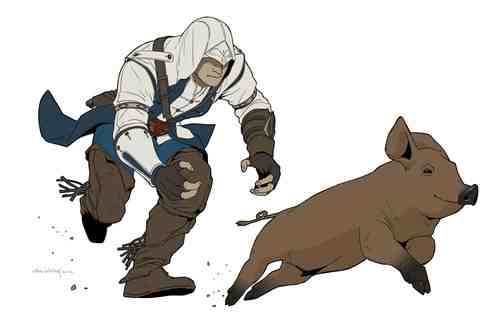

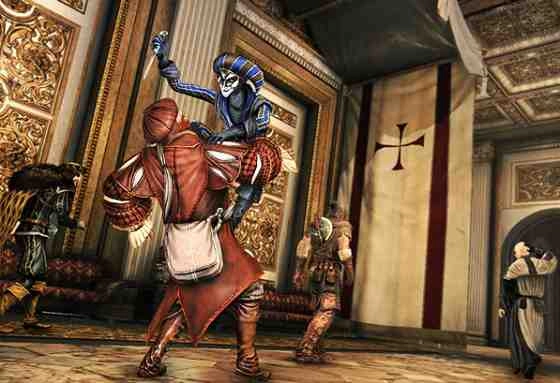
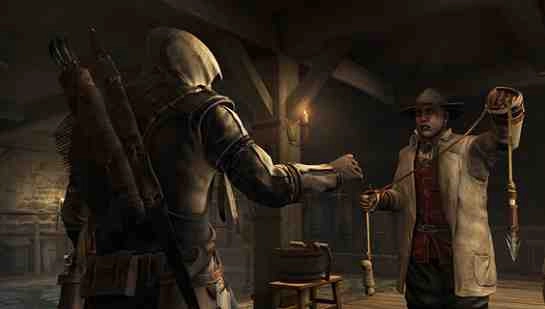
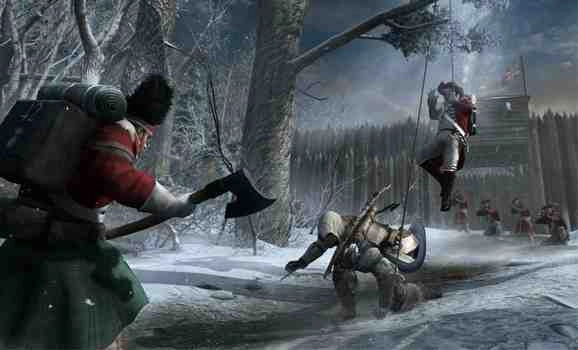
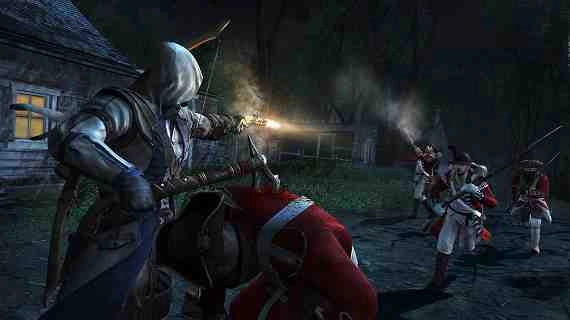

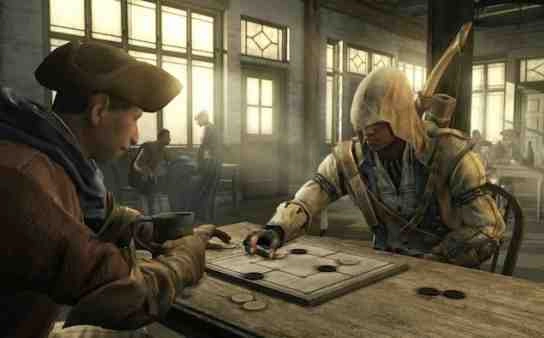
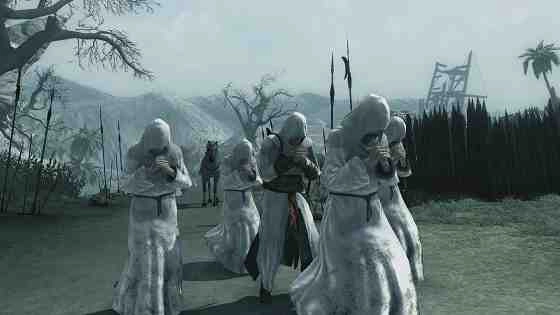




3 Comments
You must be logged in to post a comment Login